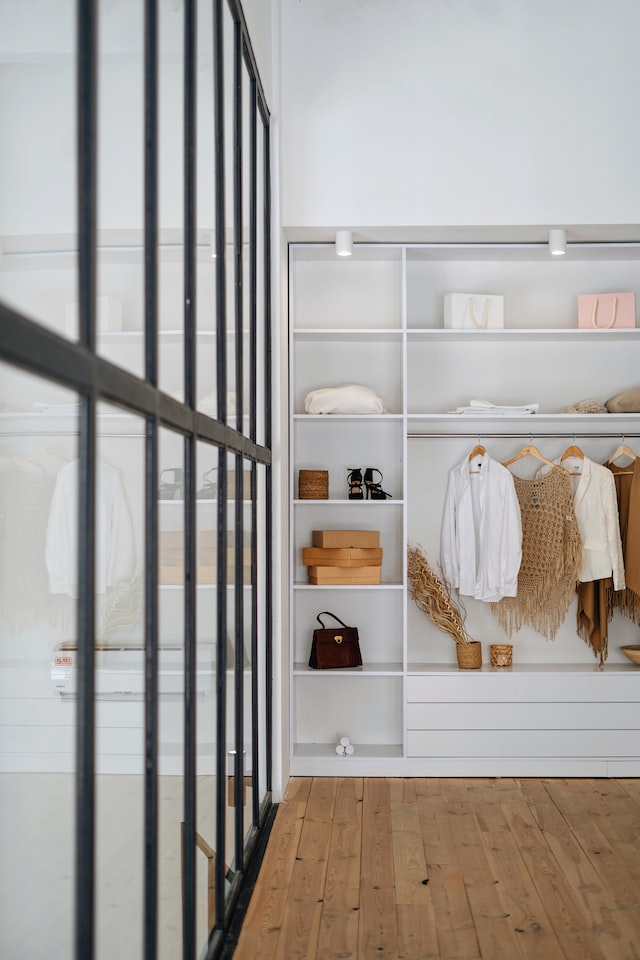 Photo by Olena Sergienko on Unsplash
Photo by Olena Sergienko on Unsplash
It’s now more than ever important to adopt a sustainable lifestyle and create a more sustainable wardrobe. Fast fashion is a huge contributor to pollution and waste, while slow fashion promotes mindful consumerism and conscious production.
In order to preserve the earth and its resources, it’s essential to turn to a slow fashion. Sustainable fashion promotes among other things, natural materials, fair trade, and healthy working conditions. Here is a step-by-step guide on creating a more sustainable wardrobe.
Take Care of Your Clothes
An easy way to be sustainable with your wardrobe is to take good care of it. When doing laundry, wash separately colored and white items and follow instructions on the clothes. Also, use an unscented laundry detergent that is hypoallergenic, vegan, paraben-free, and phosphate free.In addition to following sustainable laundry practices, another essential step is to hang your shirts on proper shirt hangers. They are designed to maintain the shape and structure of your shirts, preventing them from stretching, wrinkling, or losing their form over time. Furthermore, learn the basics of sewing, so you can repair your clothes instead of throwing them away.
Shop From Sustainable Brands
Taking your time to learn which brands are sustainable is a step to creating a more sustainable wardrobe. Usually, sustainable brands aren’t located in shopping malls or the high street. Look online and find where they’re located.
It’s important to incorporate eco-friendly living into your everyday life. Choose natural fabrics, like cotton over polyester. Buying from sustainable brands is far better than shopping from a fast fashion brand.
Be Aware of The Marketing
It’s essential to keep your mindset sustainable and be a smart customer. This means you should be aware of the marketing tricks that are trying to make people shop more. Remind yourself why you are creating a more sustainable wardrobe and moving to a slow fashion rather than spending money on fast fashion.
When you go shopping, try to be realistic, practical, and sustainable. Think about how often you will wear that piece of clothing and whether you really need it in your closet or not. Take your time, think a day or two about it, and see if that piece is still something you need and want. This way, you will save money and be a smart consumer that’s participating in a slow fashion movement.
Quality Over Quantity
Fast fashion can be tempting because a lot of things are cheap and they’re constantly changing and setting new styles and trends. However, this clothing is the least sustainable and not of great quality. So, it’s better to invest in a high-quality piece of clothing occasionally than shop constantly for poor-quality materials.
Quality clothing can be worn for a long period of time and is more economical since you won’t need to replace it frequently like fast fashion clothes.
Don’t Worry If You Make Mistakes
Don’t worry if you make mistakes since the road to creating a sustainable wardrobe is a process full of ups and downs. Also, don’t expect to have a whole closet of sustainable clothes in one day. Don’t stress yourself about it, just take your time and go day by day.
Start by shopping for sustainable brands, fixing your clothes, and decluttering them. If you really need a piece of clothing but can’t find sustainable materials, it’s okay, you don’t need to beat yourself up.
Upcycle Your Clothes
When you declutter your wardrobe, you might find some clothes would look better as something else. For example, those long trousers would make good shorts, or a dress can turn into a top. Options can be endless; it just depends on your skills and how creative you can be. Who knows, you might discover a new hobby and learn a new skill.
Conclusion
The process of creating a sustainable wardrobe takes time and research. However, it’s worth every step because you will help the planet, reduce carbon footprint, waste and water pollution, and wear clothes that are made of natural and sustainable materials.
With this step-by-step guide, you will know where to start when replacing fast fashion with a slow fashion movement.

